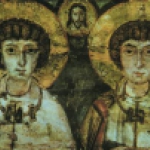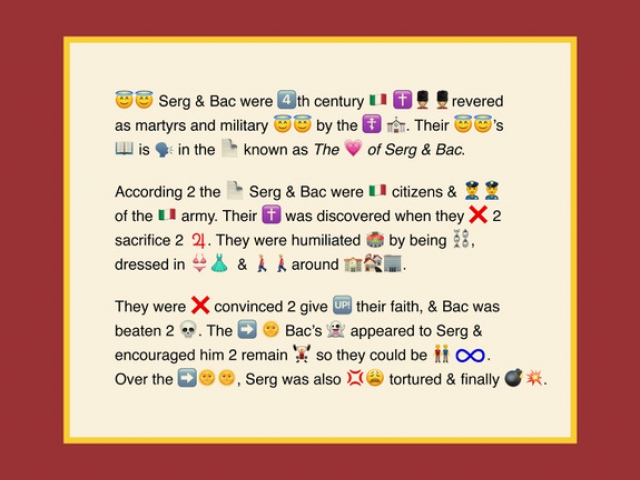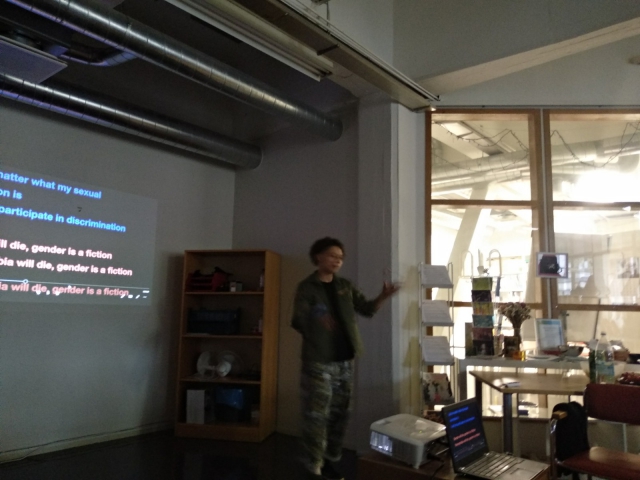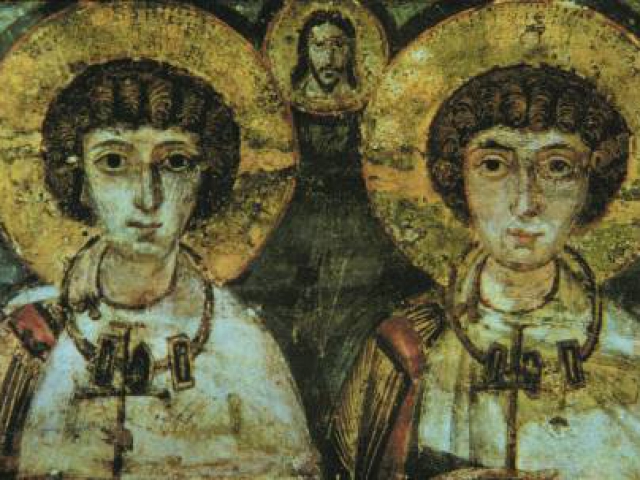- English
- Русский
New Icons. Exhibition by Kalle Hamm

exhibition by Kalle Hamm
The Cable Factory, Tallberginkatu 1, staircase D, 5th floor, Helsinki
The opening is accompanied by a performance by a genderqueer person and body-oriented performer Marina Shamova (St Petersburg, Russia) and a following talk by a Helsinki-based pastor Kai Sadinmaa, activist, writer and supporter of same-sex marriage in Finland.
Forced migration of members of Russian LGBTQ community is one of the matter that is discussed in ‘The Russian Bar’ project. In his series of new prints (or icons as he called them) Kalle Hamm uses emoji language to argue about the relations between homosexuality, gender identity and the institute of church.
The attitude of the Orthodox Church toward the LGBTQ people has varied in different times and places. For example, the early Eastern Orthodox Church had adelphopoiesis unions, which have been sometimes interpreted as a kind of proto gay marriage (1). The Finnish Orthodox Church welcomes the LGBTQ people to its community, but doesn’t bless the homosexual marriages (2). After collapse of Soviet Union there was a period of some sort of liberal approach towards gay people. As Kalle Hamm remembers in the Konevsky Monastery in Russia there use to be a kind of asylum centre for gay men living in the region (3).
After 2013 when the ‘anti-gay law’ in Russia has passed the level of intolerance in the country towards non-traditional sexual relationships has increased tremendously. The law has revealed the degree of homophobia in Russian society on the levels of governmental institutions, The Russian Orthodox Church and everyday domestic situations. Not being able to endure the situation of immanent thread queer people decide to leave the country or forced to do so. However, moving to another country with a more liberal society is not a guarantee of inclusion into local LGBTQ community. Starting life in a new country is not necessary easy, especially if ones belongs to the both ethnic and sexual minority.
In the center of the project there is a tragic story of Saints Sergei and Bacchus who have been considered as gay saints, even though there is no proof of true nature of their relationship. Martyr stories are very often stories about violence against the oppressed ones, and those who didn’t give up became martyrs. The exhibition include prints of other coupled mail and femail saints that had gone through suffering by fighting for their rights. Interpretation of the traditional icon of saints Kalle Hamm had written in emoji signs, which is an attempt to update the saints’ story to the modern times and make their stories easier to access. At the same time, it is a welcome sign to all the LGBTQ people to contemplate, how strongly they should fight for their rights to be the essential selfs.
Exhibition opening hours:
31.8-19.10.2018 on Fridays 10.00-12.00 and 13.00-16.00, and on request on other days during office hours. Please contact Christine Langinauer if you wish to visit the exhibition on other times at 0403533234.
_________________________
1 For example, John Boswell: The Marriage of Likeness – Same-Sex Unions in Pre-modern Europe, 1995
2 http://www.ortodoksi.net/index.php/Ortodoksisen_papin_näkövinkkeli
3 While Farther Moisei’s activity increased the limits of tolerance, he was moved from the Konevsky to California. Religious scientist Hannu Kilpeläinen told me this story in the Konevsky 1995.
Kalle Hamm is a Helsinki-based artist, whose work examines cultural encounters and their impacts both in historical and contemporary context. Hamm graduated with a BA degree from Lahti Institute of Fine Arts in 1994 and with MA from the University of Art and Design Helsinki 2002. Since 2000 he has collaborated with the artist Dzamil Kamanger from Iranian Kurdistan. Dealing with the position of marginality in mainstream culture and the encounters of cultures in global networks, their works occupy an intermediate zone between art, design and handicraft, and are often sparked off everyday things.





